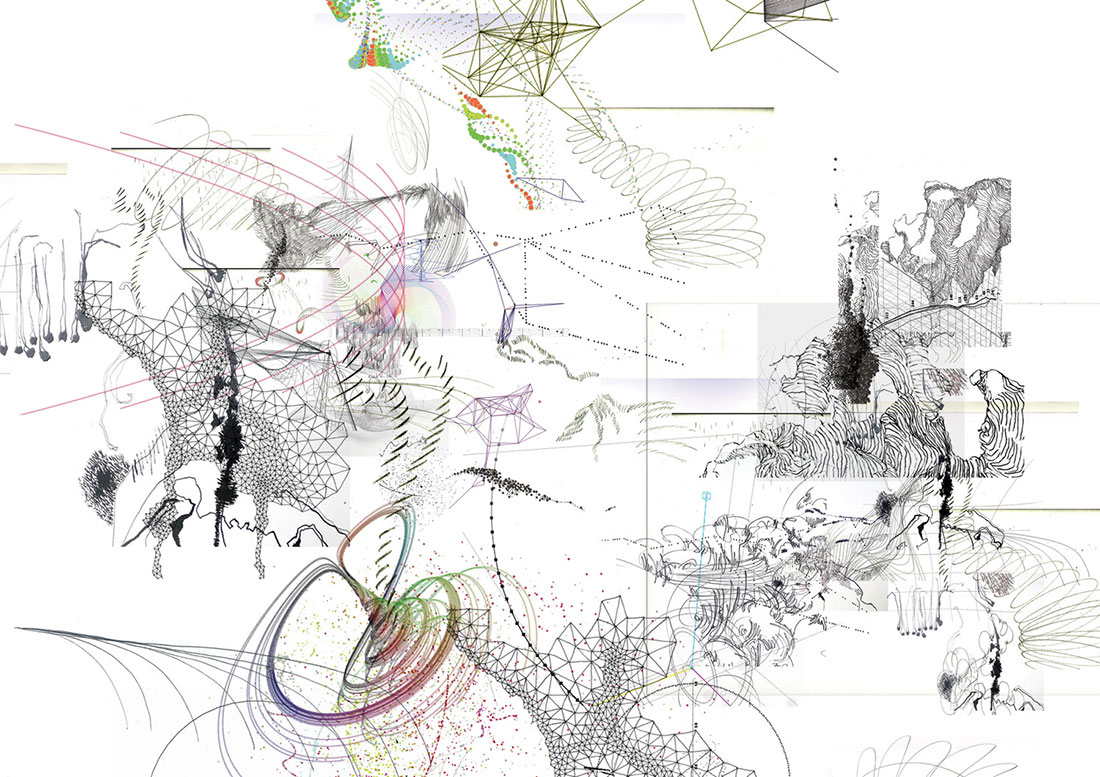Claire Malrieux
Climat Général
Hours and dates
- From 1 Nov 2018 to 4 Nov 2018 / from 10:00 to 18:00
The place
Galerie du Beffroi
About
Claire Malrieux
My work in the field of visual arts is centered around my research for a collaborative space and the tension between shape and narrative. After having worked in a collective form in which I introduced exhibition devices and founded EditionsMix with Fabien Vallos and Alex Pou, I started a visual production oriented towards new materialities issued form digital culture. I questioned the narrative processes through a game of transposition between code, graph and 2D and 3D printing. In my latest works, Atlas du Temps Présent, Economie Vibratoire and Climat Général, drawing is used as a language capable of capturing structures from contemporary culture without stultifying them. Through this, I explore not only the possibilities of a new syntax for drawing, conditionned by data and algorythms, but also the creation of specific digital tools, generative, parametric and hybrid between the hand and the machine.
These cross-border experiences between art and research prompted me to reflect on the meaning of the drawing space in the digital era, the post-digital and in digital culture more generally.
By combining emergent technologies, History and fiction, my works take their place within a singular space in art and are engaging in a dialogue with other domains, practices and knowledge planes. The narrative forms play on variations between known and apprehended, visible and invisible and on time frameworks mixing past, present and future. Representation is envisioned as a heterogenous ensemble where drawing is not bound to the laws of spatial perspective anymore, but responds to a time perspective, made of strata, of transformation, of entropy and of revolution.
Medias

Climat Général
The animation is a self-generative graphic film for which the storyline is based on a non-linear reading of events. Using generative instructions and real-time data analysis, the point is to develop a program that creates drawings, analyses what has been drawn, and finally takes into account its own evolution so it can ensure its continuity. The film, as for the evolution of the drawing, does not have a predetermined ending. Based on the use of spatial and temporal algorithms, the aim is to set up the conditions of appearance of the drawing, as well as its own oblivion, within a logic of self-generative evolution.
The visual environment comprises of a mix of several dimensions representing meteorological phenomena and major human activities. For this purpose, the world of Gaïa is organized as a collection of different moving phenomena, each of them evolving in an independent way influenced by real data and scientific models. These events can now meet within the geographical space, interact with each other, superimpose on each other, impact each other and even erase themselves.
The visual output generated by the programmatic scenario is a convolution of elements, an aggregate of signs and representations which in themselves all have the potential to tell the story of the general climate of the Anthropocene.